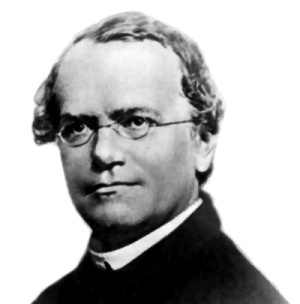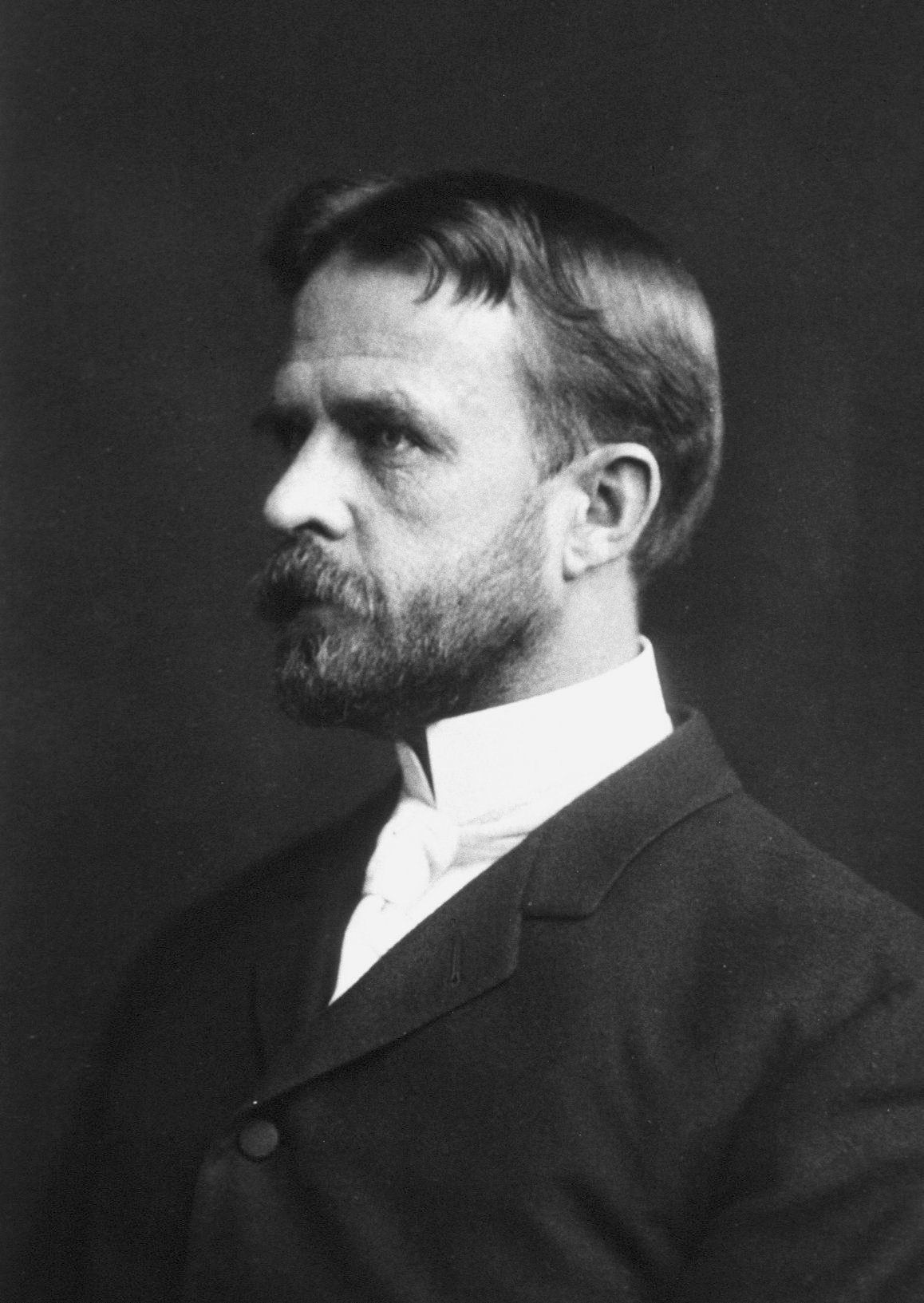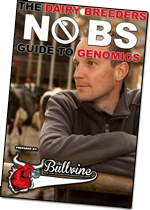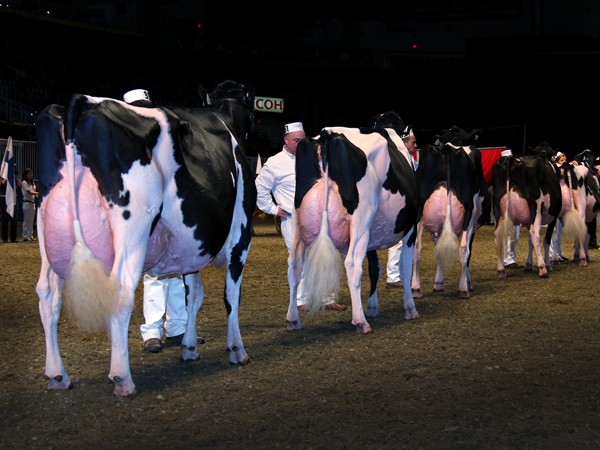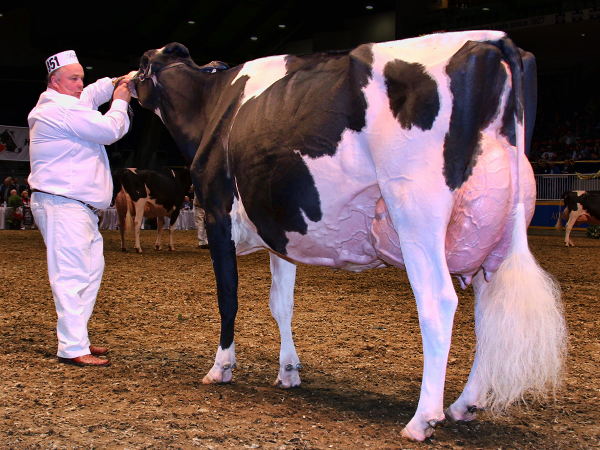From $2,500 calf to genetic revolution: How one bull’s DNA reshaped global dairy farming and still whispers in 83% of Holsteins today.

Picture this: A crisp Ontario morning in 1979, dew still clinging to the pastures. Two men Robert Chicoine and Harley Nicholson from Quebec’s CIAQ—walk into Peter Heffering’s barn at Hanover Hill Holsteins. They’d been trudging through Eastern Ontario for days, looking at bull after bull, hoping to find something special.
And then they saw him.
“I remember the first time I laid eyes on Starbuck,” shares Chicoine. “He wasn’t just good—he had that look. You know the one. The kind that makes your jaw drop.”
Just a 45-day-old calf, standing there with what I can only describe as bovine confidence. That starburst blaze on his forehead like nature’s own brand. Those wide-set eyes tracking the men as if he knew his destiny. The physical traits practically shouted genetic gold to those who could read them—squared hip promising easy calving, springy pasterns suggesting longevity, and that perfect forearm-to-stifle ratio whispered of milk production to come.
But what sealed the deal? That uncanny “prepotent aura”—the mysterious quality that tells experienced breeders this animal will stamp his traits onto generation after generation. CIAQ took a $2,500 gamble on that calf. A gamble that would return $25 million in semen sales and rewrite Holstein genetics worldwide.

By the mid-80s, Starbuck’s daughters—200,000 strong—were dominating Quebec milking parlors. Their protein yields hit that sweet 3.2% mark when the cheese market was booming, and their udders? Show-ring perfect. An astonishing 70% scored “Good Plus” or better for conformation. His semen crossed oceans to 45 countries, and those 27 Premier Sire titles between ’86 and ’95? Unheard of. We started calling him agriculture’s first “supersire,” and it wasn’t hyperbole.
But here’s where the story gets complicated, young one. The same genetics that boosted global milk production by 12% also narrowed the breed’s diversity. By 2000, about 95% of Quebec Holsteins were related to Starbuck. It’s the classic dairy farmer’s dilemma—how do you balance genetic ambition with long-term sustainability?
Today, with all our fancy CRISPR technology and genomic tools, Starbuck’s DNA still flows through 83% of sequenced North American Holsteins. His clone might have failed, but his lesson endures: In every Holstein heifer that steps into your milking parlor, there walks a bull who proved one animal could reshape an entire industry—drop by drop, gene by gene.

The 1970s: Setting the Stage for a Genetic Revolution
You’ve got to understand the world Starbuck was born into to appreciate his impact. The 1970s were a time of reckoning in Holstein breeding. Post-war industrialization had pushed milk production to new heights—from about 2,000 kg per cow in the 1920s to over 6,800 kg by the 70s. But the industry was split down the middle.
Commercial dairies wanted efficient milk machines, often at the expense of longevity. Meanwhile, pedigree breeders chased those angular frames, deep ribs, and picture-perfect udders that won ribbons but sometimes left cows broken down before their time.
“It was like two different breeds sharing the same hide,” my old mentor used to say. “Show-ring Holsteins versus working Holsteins.”
Artificial insemination had already transformed the landscape—75% of Canadian herds were using AI by ’75. But this created problems. Elite sires like Round Oak Rag Apple Elevation (Starbuck’s daddy) dominated the catalogs, creating what we now recognize as genetic bottlenecks. Would you believe 99% of Holstein Y chromosomes are traced to just two bulls from the 1960s? Talk about putting all your eggs in one basket!

The data side was even messier. Only about a third of herds participated in milk recording programs. Sire proofs were patchy at best, and many breeding decisions came down to reputation rather than hard numbers. As Jacques Leclerc told me once, “We were flying half-blind. You trusted names like Elevation because the data wasn’t there to prove otherwise.”
Meanwhile, the market was shifting. The cheese and yogurt boom created demand for protein-rich milk. Holsteins lagged Jerseys in solids (3.2% protein versus 3.8%), but their sheer volume made them the breed of choice for industrial dairies.
Health issues were becoming impossible to ignore. Cows with those pendulous udders faced 84% higher mastitis rates. Poor leg structure was cutting productive lifespans by more than a lactation. Forward-thinking breeders like Peter Heffering started talking about “functional type”—the radical notion that a cow should look good AND last.
This was the world Starbuck entered—a breed at a crossroads, needing a sire who could bridge the divide between show ring and milk tank, between pedigree prestige and commercial practicality. And boy, did he deliver.

The Perfect Genetic Storm
What made Starbuck special wasn’t just one trait—it was the perfect convergence of elite genetics. His sire, Round Oak Rag Apple Elevation (EX-96), was already legendary for transmitting milk volume and style. Those daughters averaged 29,500 pounds per lactation, with the iconic “Elevation udder”—high, wide, and tightly attached.
His dam, Anacres Astronaut Ivanhoe (VG-88 DOM), was no slouch either. Her 365-day record of 28,677 pounds of milk at 4.2% fat put her among Canada’s elite. Through her grandsire, Paclamar Astronaut, she contributed exceptional mammary traits and longevity genes.

But Starbuck’s true magic was his consistency. Where other bulls might excel in one area, he transmitted a complete package:
“I remember walking through a barn full of his daughters in ’87,” an old Quebec breeder told me. “It was like seeing the same cow repeatedly—those perfect rear udders 12% deeper than average, protein at 3.2% when that meant premium checks, and 82% with textbook leg angles. We’d never seen anything like it.”
This prepotency came from a rare genetic alignment. Elevation contributed dominant alleles for milk synthesis on chromosome 14, while Ivanhoe’s lineage provided favorable SNPs for udder attachment and metabolic efficiency. The result? Breeders called him a “genetic photocopier”—94% of his daughters shared his signature broad chest and upright teat placement.
By 1990, his Lifetime Profit Index hit +1,500, combining +2,100 kg milk, +75 kg combined fat/protein, and high conformation. He was the first bull to rank in the top 1% for production and type—something only 0.3% of today’s genomic sires achieve. That year, 38% of Canadian Holstein inseminations used Starbuck semen.
As the British Holstein Journal put it: “The sire that attracts endless superlatives—one of a kind, the greatest, phenomenal, the king, Mr. Excitement, or… ‘Simply the Best’.”

From Quebec to the World
CIAQ knew they had gold in their tanks. By 1998, they’d sold 685,000 semen doses across 45 countries—enough to fill 1,370 liters—generating $25 million in revenue (that’s over $45 million in today’s money).
His daughters thrived everywhere they landed:
- In Bavaria, they averaged 8,900 kg milk over 305 days—12% above German averages
- In Ukraine’s Sumy region, his descendants still constitute 21.9–40.3% of the breeding stock
- In South Africa’s heat, they maintained production where other genetics faltered
But it was in the show ring where Starbuck truly became a brand. Between 1986 and 1995, he earned 27 Premier Sire titles at major North American shows. His daughters, like Hanoverhill S Alicia (EX-97), collected 82 All-American nominations and 130 All-Canadian honors.
“Seeing a Starbuck heifer stride into the ring was like watching royalty enter,” one Quebec farmer told me. “You knew she’d win.”
CIAQ’s windfall wasn’t just profit—it transformed the AI industry. They funded young sire testing for 500+ bulls annually by 1995, invested in early BLUP models that laid the groundwork for today’s genomics, and established distribution hubs across continents.
Their 1987 catalog summed it up perfectly: “Why gamble on untested genetics when Starbuck delivers?” His proven track record convinced even skeptical farmers to embrace AI, pushing Canadian adoption rates to 89% by 1990.

The Double-Edged Sword
By 2000, Starbucks’s influence had reached levels we’d never seen before—and we hope never to see again. His 200,000+ daughters spanned 45 countries, with 62,000 in Canada alone. In Quebec, 95% of Holsteins carried his genetics, creating both a triumph and a ticking time bomb.
His 209 proven sons, including standouts like Hanoverhill Raider with his +0.07% protein transmission, extended this dynasty into a third generation. The global footprint became staggering—from Japan’s northern island to Brazil’s dairy regions, Starbuck’s genes were reshaping the Holstein breed.
But this dominance came at a cost. By 2000, inbreeding coefficients in Quebec herds hit 6.8%. His daughters, while productive, showed -1.23 PTAT for fertility—a stark reminder that genetic concentration has consequences. Their extreme dairy character, while beautiful, correlated with 18% higher culling rates for metabolic disorders compared to outcrossed herds.
Smart breeders adapted. The Danes started crossing Starbuck-line cows with VikingRed cattle to improve hoof health. AI centers eventually limited his lineage to 5% of catalogs, using SNP-guided mating to reduce inbreeding risks. Modern evaluations now actually penalize Starbuck-line bulls for those fertility deficits.
As Lactanet’s 2024 report shows, Holstein inbreeding rates have stabilized around 9.61% in 2023 births. However, the annual increase of +0.25% remains the highest among major dairy breeds—a lingering echo of the Starbuck era.

The Twilight Years and Beyond
Starbuck’s career spanned an extraordinary 19 years (1979–1998)—most bulls retire by 12. He remained fertile until his death on September 17, 1998, in Saint-Hyacinthe, Quebec. His frozen semen from the early years continued producing daughters well into the 2000s, with a Michigan dairy reporting a 2005-born daughter yielding 18,300 kg milk at 3.7% protein.
Then came the clone. In 2000, scientists at Université de Montréal and L’Alliance Boviteq created Starbuck II using somatic cells frozen before his death. Born September 7, 2000, weighing 54.2 kg, the calf initially showed promise. But mitochondrial DNA discrepancies—his nuclear DNA matched Starbuck at 99.8%, but his mitochondrial DNA came from the host oocyte—led regulators to block commercial use.
The cloning process took 64 attempts initially, though Dr. Lawrence Smith’s team later improved success rates to 1 in 17. Despite the technical achievement, by 2010, genomic selection had made cloning obsolete. Starbuck II was cremated—a symbolic end to an ambitious chapter.
“Cloning taught us precision—but also humility,” Dr. Smith noted. “Nature’s blueprint resists shortcuts.”
Starbuck’s influence extended beyond agriculture. The 2011 Québécois film Starbuck and its Hollywood remake Delivery Man (2013) humorously explored the ethics of mass genetic contribution. More importantly, his story forced the industry to confront inbreeding risks, leading to today’s Optimal Contribution Selection protocols.
In death, he remains both icon and cautionary tale—a bull whose legacy lives not in clones but in the DNA of herds worldwide and the hard-won wisdom of breeders navigating genetic frontiers.
Legacy Through Offspring
Hanoverhill Starbuck’s legacy is profoundly shaped by his extensive and influential offspring, who cemented his status as a Holstein legend and continue to impact the breed today. Starbuck was an exceptional individual and a prepotent sire who consistently transmitted desirable traits to his progeny.
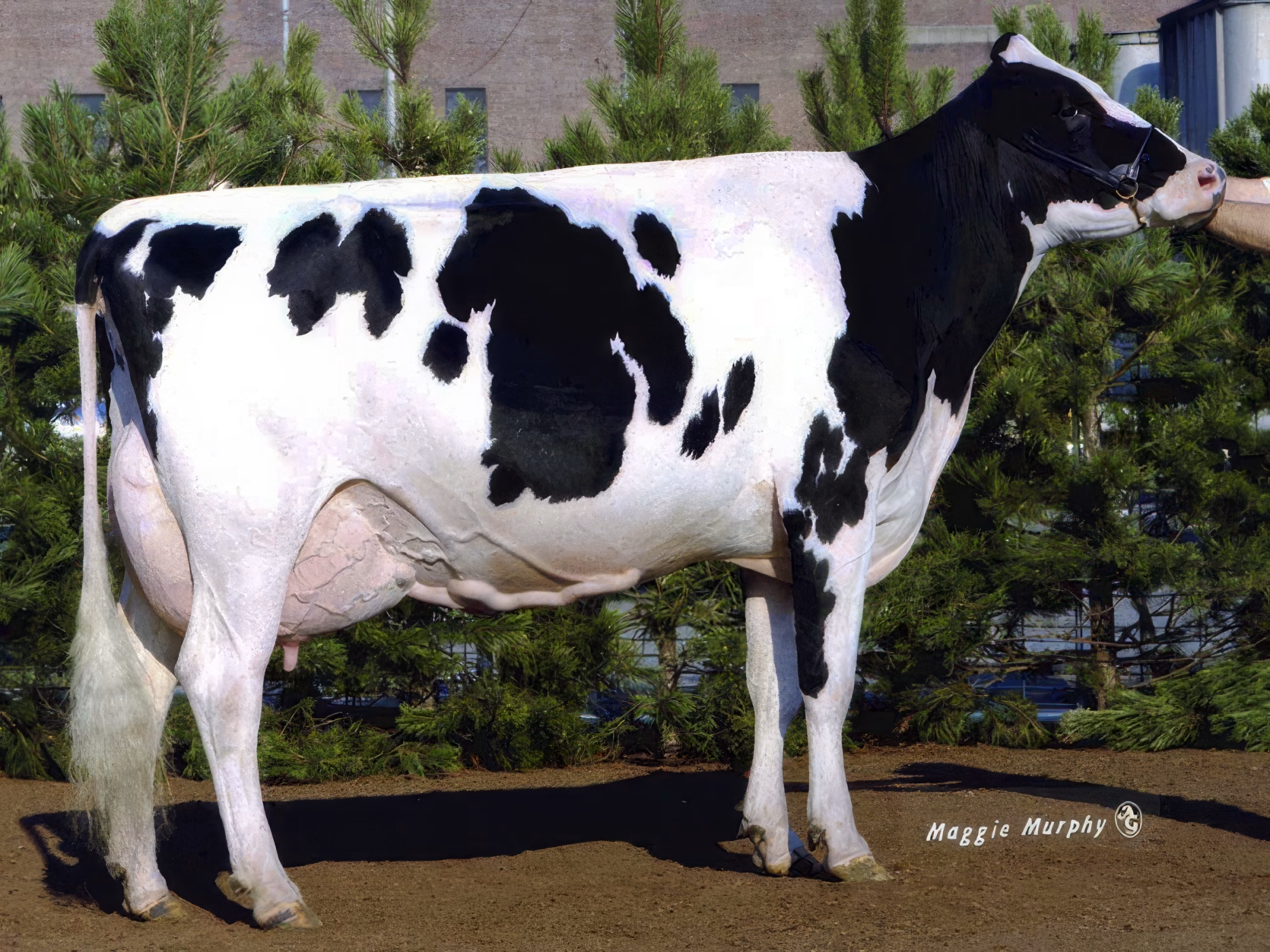
Starbuck’s daughters achieved remarkable success in various aspects, contributing significantly to his legacy. They were highly regarded for production and conformation, often excelling in show rings and becoming high-producing milk cows.
- Many of his daughters achieved high classification scores, with 70% scoring Good Plus or better in Canada.
- He sired more milking-age All-American daughters (10) than any other sire in history. His daughters collectively earned numerous All-Canadian (35) and All-American (42) honors.
- Notable daughters, such as Hanoverhill S Alicia (EX-97), Dupasquier Starb Winnie (EX-3E-8*), Merkley Starbuck Whitney, and Acme Star Lily (EX), became show-ring champions and iconic figures.
- Beyond show success, many Starbuck daughters were influential brood cows, such as Aitkenbrae Starbuck Ada (EX), who produced other All-American and All-Canadian winners, and Thiersant Lili Starbuck (E2X-4-94), whose extensive offspring became the “face of Lylehaven” and are ancestors of modern sires like Farnear Delta-Lambda. Hanoverhill Star Lulu (EX) fetched a record price of $635,000.
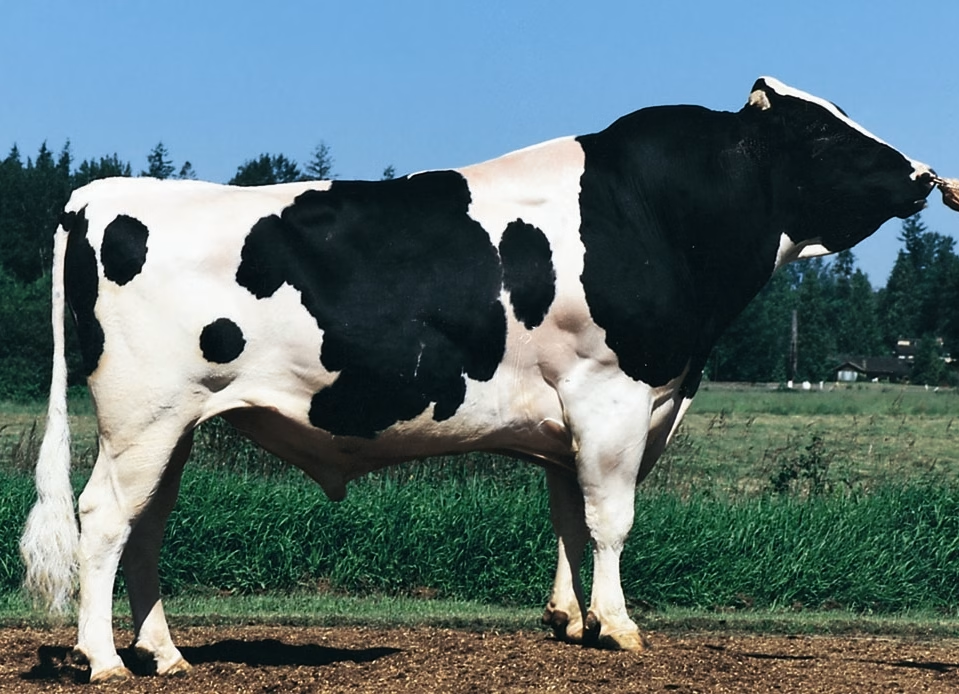
Starbuck was also an exceptional sire of sons, extending his genetic influence and shaping the future of the Holstein breed.
- By January 1994, 25% of Canada’s active AI sires were Starbuck sons.
- His sons and grandsons consistently topped the Lifetime Profit Index (LPI) in Canada from 1991 to 1998.
- Influential sons like Madawaska Aerostar (EX-Extra-GM) became a dominant force in production, particularly for protein yield, and sired numerous influential sons themselves, such as Startmore Rudolph and Maughlin Storm.
- Ronnybrook Prelude (GP-GM-Extra), despite some fluctuations in his proof, also became a significant sire, responsible for notable descendants like Comestar Outside and the sire of Picston Shottle.
- Duregal Astre Starbuck (EX-Extra) achieved international recognition, with his semen exported to 40 countries. His son STBVQ Rubens significantly impacted the Red & White Holstein breed.
- Hanoverhill Raider (EX-Extra) was highly regarded by his breeders and sired influential sons like Comestar Lee.
The impact of Starbuck’s genes extends through multiple generations. His grandchildren and great-grandchildren have continued to be prominent in production and type, demonstrating the lasting power of his genetic contribution. For instance, Picston Shottle is described as a “genuine Starbuck ambassador” as both his sire and dam’s sire were Starbuck grandsons. The pedigree of modern influential sires like Farnear Delta-Lambda also shows significant traces of Starbuck’s lineage. By 2000, Starbuck’s influence was so widespread that 95% of Quebec Holsteins carried his genetics. Today, his DNA still flows through 83% of sequenced North American Holsteins, and 35% of the world’s top GTPI females trace back to him.
Hanoverhill Starbuck’s legacy through his offspring is one of unprecedented genetic impact, transforming the Holstein breed globally through his high-performing and phenotypically superior daughters and influential sons. While his prepotency achieved remarkable genetic progress, it also underscored the importance of maintaining genetic diversity for the long-term health and sustainability of the breed. His story is a powerful lesson in balancing genetic ambition and responsible breeding practices.
Show Ring Success

Hanoverhill Starbuck’s show ring success, primarily achieved through his progeny, was a crucial element of his widespread acclaim and lasting legacy. The exceptional conformation of his offspring, which translated into significant victories and recognition in major shows.
Starbuck himself was recognized as a Premier Sire at major North American shows 27 times between 1986 and 1995. This indicates his remarkable ability to consistently sire offspring with the desired traits for show ring success.
However, it was his daughters who truly shone in the show ring, solidifying his reputation.
- An astonishing 70% of his Canadian daughters scored “Good Plus” or better for conformation.
- He sired more milking-age All-American daughters (10) than any other sire in history.
- His daughters collected 82 All-American nominations and 130 All-Canadian honors. He sired 32 progeny who earned 42 All-American and 24 Reserve awards, and 41 offspring who won 35 All-Canadian and 27 Reserve awards.
- Numerous individual Starbuck daughters became show ring champions and iconic figures. Examples include:
- Hanoverhill S Alicia (EX-97), who contributed to his Premier Sire titles.
- Dupasquier Starb Winnie (EX-3E-8)*, an All-American aged cow in 1993 and 1994 and a Grand Champion at the Royal Winter Fair and International Holstein Show.
- Merkley Starbuck Whitney, an All-American junior 3, 4, and 5-year-old in 1991-93.
- Acme Star Lily (EX), an All-American four and five-year-old in 1997-98.
- Hanoverhill Star Lulu (EX), All-American senior two-year-old of 1988 and his highest selling offspring at $635,000.
- Aitkenbrae Starbuck Ada (EX), All-American senior three-year-old in 1990.
Starbuck’s sons also contributed to his show ring legacy, both through their own desirable traits and their ability to sire high-conformation offspring.
- Madawaska Aerostar (EX-Extra-GM), while primarily known for protein production, also transmitted exceptional conformation (+5 LPI).
- Duregal Astre Starbuck (EX-Extra) was also Premier Sire at the Royal Winter Fair in 1999, and Reserve in 1997 and 1998.
- Hanoverhill Raider (EX-Extra) sired Glenridge Raider Cinema (2X-95), noted as the youngest cow to score 95 points in the UK.
- Marcrest Encore (EX-96-GM) was often advertised as the highest type son of Starbuck.
- Hanoverhill Skybuck (EX-ST) was known as a sire of show type, siring Llleeta Skybuck Lucy (EX), grand champion at Madison in 2007.
- Ronnybrook Prelude (GP-GM-Extra) is noted for adding strength and substance to his offspring.
The show ring success of Starbuck’s progeny was integral to his overall impact and commercial appeal. Their victories not only demonstrated his ability to transmit desirable conformation traits but also significantly increased the demand and value of his semen and offspring. The phrase “functional type,” which Peter Heffering emphasized, highlighted the importance of cows that could both perform in the show ring and be productive, long-lasting members of the herd. Starbuck embodied this ideal, bridging the gap between “show-ring Holsteins” and “working Holsteins”.
Furthermore, the influence of Starbuck’s show-winning daughters extended into future generations, as many became influential brood cows, producing more champions and high-quality offspring. For example, Aitkenbrae Starbuck Ada was the dam of Shoremar S Alicia, a Royal Winter Fair grand champion. Thiersant Lili Starbuck became the “face of Lylehaven” due to her extensive and high-scoring offspring. Kingsway Dempsey Nora EX-95, a more modern example, traces her distinguished pedigree back to Starbuck through her maternal line, showcasing the lasting impact of his conformation genetics.
In conclusion, Starbuck’s show ring success, primarily through his remarkably consistent and high-achieving daughters, was a cornerstone of his legendary status. It demonstrated his ability to transmit exceptional conformation, increased his commercial value, and established a lineage of show-winning and influential breeding animals that continue to impact the Holstein breed today. His ability to sire both high-producing and high-conformation offspring was a key reason for his widespread adoption and his place as a truly transformative figure in Holstein history.

From Phenotype to Genome: Starbuck’s Modern Legacy
The contrast between Starbuck’s era and today’s breeding methods couldn’t be starker. When Chicoine and Nicholson selected him, they relied on visual assessment and pedigree. Today’s breeders use 50K SNP chips to decode DNA, predicting traits like methane efficiency (-55.8 €/kg DM/day) and feed intake before a calf takes its first breath.
Where Starbuck’s proof required years of daughter testing, genomic evaluations now achieve 85% reliability in calves, cutting generation intervals by 40%. His daughters met 1980s needs for protein and volume; today’s indices prioritize Feed Saved (reducing dry matter intake by 1.2 kg/day) and Methane Efficiency, measured through mid-infrared spectroscopy and SNP markers.
Lactanet Canada’s 2023 methane-adjusted breeding values exemplify this shift, enabling selection for cows producing 20% less methane without sacrificing yield. It’s a different world, focused on efficiency and sustainability rather than just production.
Modern breeding also addresses Starbuck’s greatest weakness—genetic concentration. Optimal Contribution Selection caps single-sire influence at 5% of AI catalogs. SNP-guided mating using 13,250 markers reduces inbreeding by 22%, even in regions like Ukraine, where his descendants remain dominant.
CRISPR trials now target specific genes like ANKS1B and CCSER1 to enhance reproduction and milk yield simultaneously, addressing the fertility deficits his line introduced. Meanwhile, k-means clustering of SNP data helps breeders balance productivity with genetic diversity.
Starbuck’s legacy endures not in clones but in lessons learned. His era’s pursuit of prepotency paved the way for today’s sustainability-driven genomics, where each SNP tells a story of progress and caution—a billion-dollar bull’s blueprint refined for a greener future.

The Man Behind the Bull: Peter Heffering’s Vision
You can’t talk about Starbuck without acknowledging the breeder who created it. Peter Heffering and Ken Trevena built Hanover Hill Holsteins on a revolutionary premise: “Functional type isn’t just about show rings—it’s about cows that last.”
He rejected the false choice between volume and vitality, selecting deep ribs (feed capacity), correct leg angles (longevity), and udders that could withstand high production without breaking down. His mantra—”Breed the best, and the rest will follow”—guided a program that would reshape global genetics.

Heffering’s philosophy crystallized in 1983 with the $1.45 million sale of Brookview Tony Charity, another son of Elevation. “Tony proved that show-stoppers could also be barn survivors,” Heffering once reflected. The sale funded Hanover Hill’s expansion into embryo transfer, allowing him to multiply his best cow families.
His toolkit blended old and new approaches:
- Regular classification scoring ensured every animal met his standards
- Embryo transfer accelerated genetic gains while maintaining diversity
- Strategic outcrossing prevented overreliance on any single-line
Despite Starbuck’s success, Heffering avoided putting all his eggs in one basket, often pairing Starbuck daughters with sons of Wis Ideal to reinforce rump width and hoof health.
His humility belied his ambition: “We didn’t set out to create a dynasty—we aimed to breed the best.” And: “A cow’s value isn’t in her pedigree; it’s in her ability to outlast the mortgage.”
By 1995, 92% of Canadian heifers carried Hanover Hill genetics, while German breeders praised Starbuck daughters for thriving in free-stall barns—a testament to Heffering’s focus on adaptability. His vision proved that excellence need not sacrifice sustainability, creating a blueprint for today’s breeders.
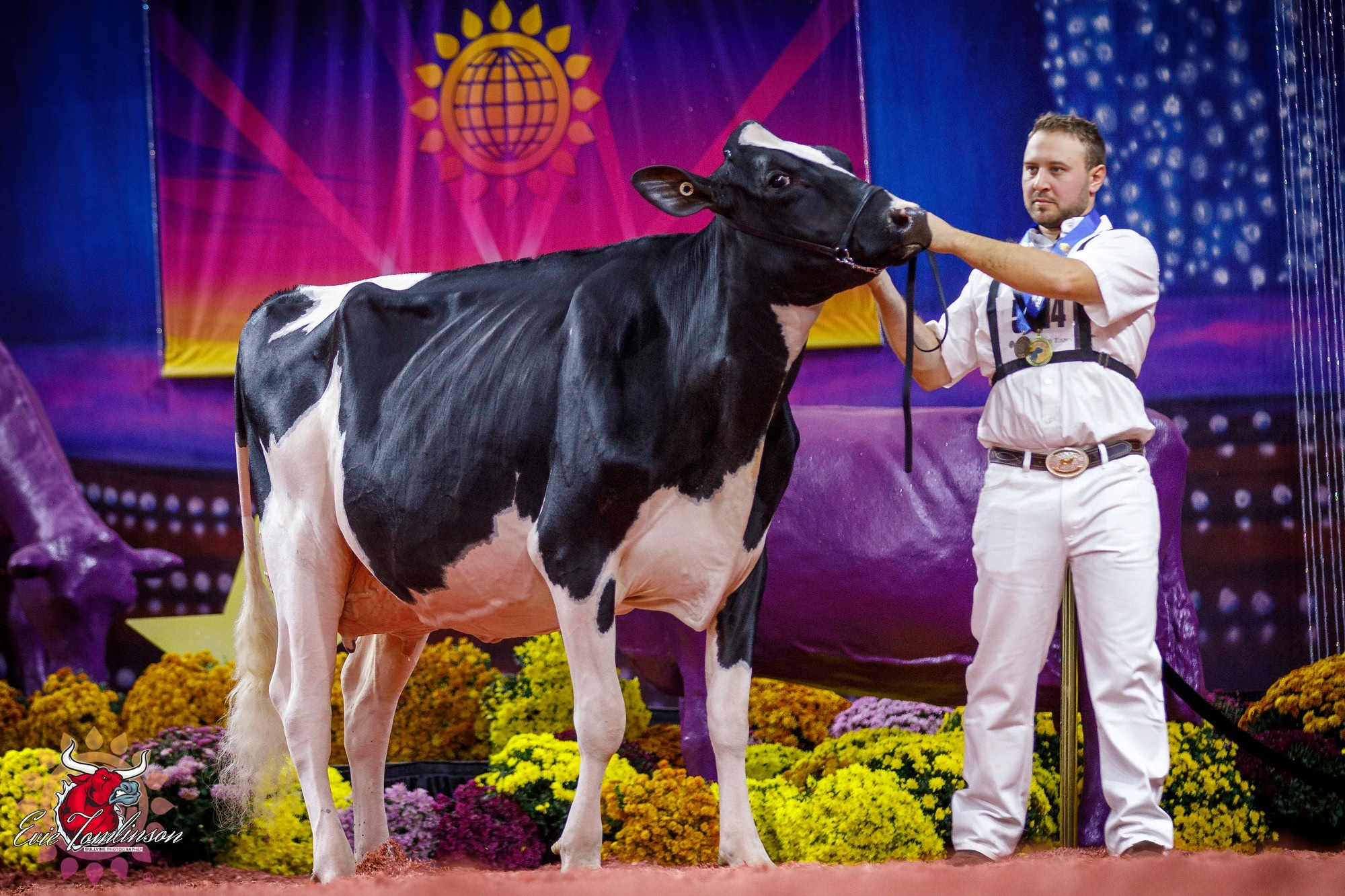
Lessons for Today’s Breeders
Starbuck’s story offers timeless wisdom for anyone working with livestock genetics. His dominance—95% of Quebec Holsteins related to him by 2000—revealed the power and peril of genetic concentration.
Today’s tools, like Optimal Contribution Selection, mitigate these risks by limiting individual sire contributions to 5% of breeding programs. Lactanet’s 2025 framework penalizes bulls with high kinship scores to prevent history from repeating itself. With Holstein inbreeding rates at 9.61% (2023 data), Starbuck’s legacy reminds us that genetic progress without diversity is a short-lived triumph.
His success also teaches market responsiveness. Starbuck met the 1980s demand for high-protein milk (3.2%)—just as today’s breeders adapt to new priorities:
- A2 β-casein (New Zealand now produces 86% A2 milk)
- Environmental metrics (Canada’s 2025 LPI update includes methane efficiency)
- Feed efficiency (U.S. Net Merit $ index now prioritizes residual feed intake)
As one Danish breeder put it: “We’re not just selecting cows—we’re curating supply chains.”
The bottom line? Starbuck’s genome is both foundation and warning. Progress without preservation risks extinction. His daughters’ protein yields-built empires, but their fertility struggles revealed the cost of imbalance. Modern tools now let us honor his legacy while avoiding its pitfalls.
Remember, young breeder: “Genetic greatness isn’t measured in semen doses sold, but in herds that thrive across generations.”
The Hoofprint of History
Starbuck’s legacy is etched into the very DNA of modern dairy farming. He redefined what a single bull could achieve, from his 200,000+ daughters to his 27 Premier Sire titles. His story embodies dairy breeding’s central paradoxes: unifying global priorities while narrowing diversity to attain commercial success and raising ethical questions.
His genetic penetration remains unmatched—95% of Quebec Holsteins carried his lineage by 2000, and today, 35% of the world’s top GTPI females still trace to his pedigree. His show ring daughters, like EX-97 Hanoverhill S Alicia, proved that style and substance could coexist, bridging the divide between pedigree prestige and commercial practicality.
Yet his greatest contribution may be the lessons learned from his shortcomings. The fertility deficit and inbreeding spikes forced breeders to confront the cost of unchecked genetic ambition. Today’s approaches—Optimal Contribution Selection, methane efficiency indices, and CRISPR-edited traits—blend his production prowess with ecological stewardship.
As Holsteins face climate mandates and ethical scrutiny, Starbuck’s influence persists: in the udder structure of a champion heifer, the protein yield of a commercial herd, and the algorithms parsing genomic data. His story isn’t just about breeding better cows and building resilient agricultural systems.
In every modern Holstein’s stride, Starbuck’s DNA whispers—a testament to how one bull’s blueprint can milk the future, for better and sometimes for worse, but always with lessons that transcend generations.

Key Takeaways
- Genetic Influence: Starbuck’s DNA persists in 83% of North American Holsteins, demonstrating how a single exceptional animal can transform an entire industry through consistently transmitting economically valuable traits.
- Paradoxical Legacy: While Starbuck improved milk production worldwide, his dominance led to inbreeding challenges (6.8% coefficient in Quebec herds), teaching breeders that “genetic progress without diversity is a short-lived triumph.”
- Market Adaptability: Starbuck’s success coincided perfectly with the 1980s demand for protein-rich milk, highlighting how aligning breeding goals with market trends creates commercial value. This principle continues with today’s focus on A2 milk and methane efficiency.
- Technological Evolution: His career spans breeding’s transformation from visual selection to genomic science, with his 2000 cloning (Starbuck II) bridging traditional methods and modern techniques that now use 50K SNP chips and CRISPR editing.
- Ethical Framework: Modern breeding programs directly respond to Starbuck’s overwhelming influence through Optimal Contribution Selection, limiting individual sires to 5% of breeding programs – ensuring today’s genetic progress maintains diversity and sustainability.
Executive Summary
Hanoverhill Starbuck, a Holstein bull born in 1979 and purchased by CIAQ for $2,500, became one of the most influential dairy sires in modern history, generating $25 million through 685,000 semen doses sold across 45 countries. His exceptional genetic “prepotency” consistently passed along superior traits for milk production (+1,200 kg over contemporaries), protein content (3.2%), and udder conformation (70% of daughters scored “Good Plus” or better), creating over 200,000 daughters worldwide and reshaping Holstein genetics to the point where 95% of Quebec Holsteins carried his lineage by 2000. While his contributions dramatically increased global milk productivity and quality, his dominance created genetic bottlenecks that modern breeding programs now carefully manage through genomic selection techniques and diversity preservation strategies. Starbucks’ legacy endures not just in the DNA of today’s dairy cows but also in the fundamental lessons he taught the industry about balancing genetic progress with sustainability.
 Join the Revolution!
Join the Revolution!
Join over 30,000 successful dairy professionals who rely on Bullvine Daily for their competitive edge. Delivered directly to your inbox each week, our exclusive industry insights help you make smarter decisions while saving precious hours every week. Never miss critical updates on milk production trends, breakthrough technologies, and profit-boosting strategies that top producers are already implementing. Subscribe now to transform your dairy operation’s efficiency and profitability—your future success is just one click away.







 Join the Revolution!
Join the Revolution!
